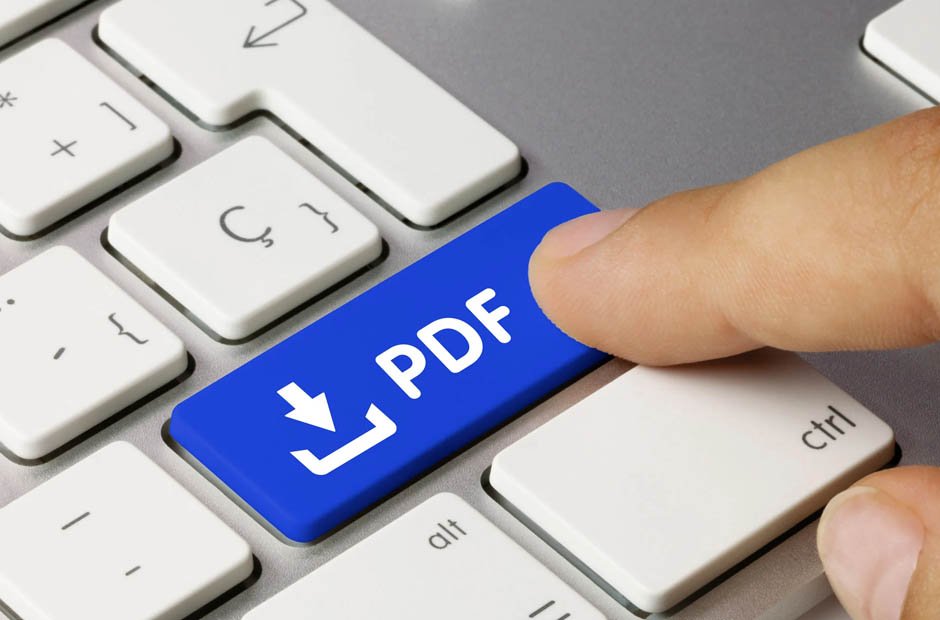You probably know what a PDF is. The acronym stands for Portable Document Format, and Adobe designed these types of files in the 1990s. PDF files can present graphics, images, text, and numerous other things in consistent formats independently of hardware or software.
PDF files are commonly used for enterprising purposes. Firms love to use them because they’re reliable and lend themselves well to more flexible and innovative work processes. There’s a lot to play around with here.
However, though PDFs are resourceful tools as they are, there’s more that can be done with them than many might think. There are numerous tools to explore here and third-party services that can complement the commercial use of a PDF rather well.
What are the more interesting things you can do with a PDF that make them more useful? We explore the answers to this question down below.
Table of Contents
Incorporate Multimedia Elements
Companies are becoming increasingly complex. The people staffing them are also becoming more versatile and skilful, often spinning many plates at once.
PDF files lend themselves well to a thriving, dynamic work environment. They’re a part of the tech revolution that makes people more productive and resourceful in their positions. PDF files are multifaceted, and part of that effect is achieved through its scope for multimedia presentation.
Numerous multimedia elements can be embedded into a PDF file. There can be audio and video components, as well as interactive features that encourage users of the file to click buttons, fill out forms, and provide digital signatures (more on that latter point later). Because of these capabilities, PDFs can significantly improve staff attention spans.
After all, it’s often been said that technology is responsible for the reverse, with questions about how increasing reliance on tech will affect areas like education. Well, PDFs can be exempt from these concerns. The files can be used to develop multi-layered product catalogues, immersive instructional and training materials, and help create presentations that don’t bore colleagues to tears. Everyone can be far more engaged in their inclusion in work processes.
Use a PDF Compressor Tool
There’s a lot of potential wrapped up with PDF usage. Because they can take on so many functions, the size of these files can be on the larger side.
However, if a PDF compressor tool is used, the situation changes quite drastically. The quality of images isn’t lost during the shrinking, and the PDF can then be sent over email and other communication channels without restriction. Storage is also easier, as PDFs will eat up less digital space on cloud servers, flash drives, and elsewhere.
With some providers, you can compress PDF files and reduce their size by up to 99%, making data management significantly easier. They do this by re-encoding heavy images and removing repetitive patterns, ensuring a professional result with a much lighter PDF. The process is quick and painless, and some providers may even offer their tools for free.
PDF files that have been compressed can be downloaded and uploaded more quickly, irrespective of their content. It can also mean a smartphone might be able to open and access the PDF file, whereas, with larger files, there may be some restrictions. Ultimately, PDFs are far more accessible this way.
Explore Compatible Systems
As we mentioned beneath the last heading, a PDF compressor can make a PDF file more compatible with things like email. However, there are other systems where the use of a PDF can be made easier and more convenient.
For example, it’s possible to comment on PDFs via Google Drive, accessing the data from any smartphone, computer, or tablet you may own. The files are also compatible with other systems and software, like:
- Microsoft Edge
- Adobe Acrobat Reader
- Foxit Reader
- Mozilla Firefox
- Kindle devices
- Linux (if PDFs are accessed via applications like Okular, Evince, and the aforementioned Adobe Acrobat Reader).
Of course, PDF files are easily converted as well. Whereas Microsoft Word and Excel files are typically only openable within their own respective programmes, PDF files can be converted and moved around different systems within seconds. If firms are dealing with a lot of PDF data, then the lack of restrictions can be a liberating game-changer.
Split/Merge Files
When it comes to PDF files, what you see isn’t always what you get. There are other ways to toy with the fabric of the file, making it more than what it is presently.
We’re referring to the process of either splitting or merging PDF files. Splitting a PDF file may be useful if you wish to compartmentalise a huge file into a series of more manageable ones. However, merges can also be beneficial in some contexts, giving users just one space to work within.
There are many other reasons why you might want to explore these options. For instance, you may wish to make the process of finding and extracting text easier. Alternatively, you may wish to rearrange files based on topical relevance or even create your very own handouts, e-books, or other literature for business purposes. Whether it’s convenience or creativity, PDF files support it all.
One of the more common reasons people merge and split PDF documents is for better version control. Some people prefer saving versions of PDF documents separately, while others prefer to consolidate PDF files into one so that people don’t struggle to track what’s been altered. Either approach is valid.
Utilise the Full Potential of Security Features
Firms must safeguard their data. Any stone left unturned in that arena risks exposing companies to needless risks and breaches.
Fortunately, some businesses can fend off cyberattacks, but sooner or later, many of those targeted will suffer significant data breaches. Success with cybersecurity today doesn’t guarantee the same result tomorrow, especially if processes become stagnant or otherwise mismanaged. You must be vigilant.
There are numerous measures to implement here, but one of them could be the more frequent use of PDF security features. These files can be encrypted and password protected. It can be a tiered system as well. For example, you may wish to permit a user to view a PDF but restrict their modification and data extraction capabilities. Of course, you can also prohibit users from opening the PDF entirely.
PDF files have redaction tools that users can use to obscure parts of images and text from unauthorised individuals. Consequently, even if a PDF file ends up in the wrong hands internally, the most sensitive information should still be inaccessible.
There can be a maintenance-like approach to PDF usage too. After all, the software for PDFs also has independently operating security systems and updates. Regularly update your software to secure the latest patches. You could also utilise digital signatures to verify the sender’ create a record of such verifications. All bases can be covered here.
Conclusion
There are PDFs, and then there are PDF experts who embrace using them well. Learning all the intricacies surrounding these files allows your firm to be more collaborative, customer-friendly, and secure. Layers of protocols can be incorporated into their use, keeping your firm traversing a steadier path to success. These tools can provide many reassurances, build the confidence of yourself and your colleagues, and potentially open up new opportunities as well.










